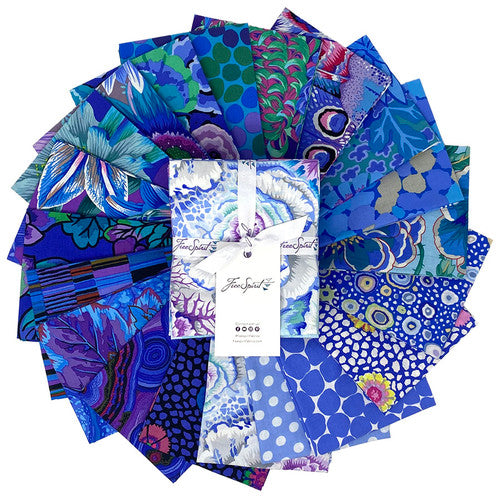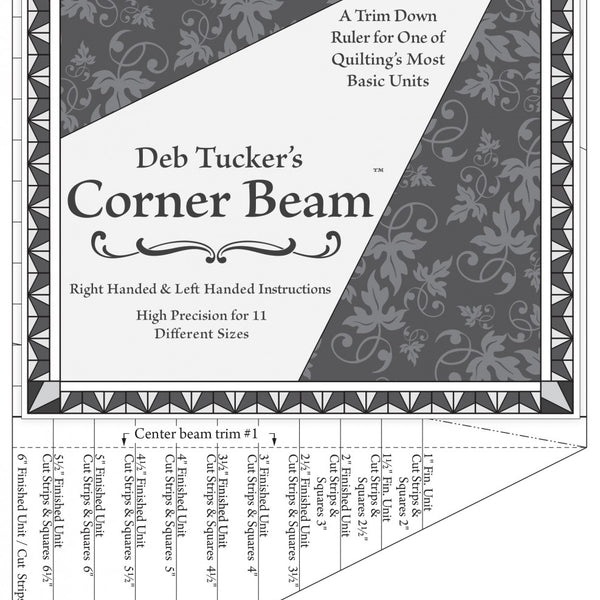Are you struggling to find the best ways to store your quilt fabric? This post presents creative ideas on how to store fabric efficiently. It covers custom fabric storage solutions, organizing by project, and using innovative, DIY containers that save space. Readers will gain practical tips to keep their fabric organized, easily accessible, and ready for their next quilting project. This guide addresses the common problem of clutter and storage confusion, offering clear steps to make quilting simpler and more enjoyable.
Create Custom Fabric Storage Solutions for Your Space
This section covers various fabric storage ideas using clear bins, hanging organizers, shelving, upcycled furniture, and cozy fabric corners with soft cubbies. Solutions are labeled for quick finds.
Choose Clear Storage Bins for Easy Access to Fabrics
Using clear storage bins allows a quilter to quickly locate materials such as spandex, yarn, and broadcloth while maintaining a tidy workspace, which benefits any interior design project. This solution helps a quilter measure fabric in metres with ease and brings order to creative chaos, keeping storage efficient and projects on track.
Use Hanging Organizers to Maximize Vertical Space
Integrating hanging organizers into a fabric storage system offers a practical way to utilize vertical space, keeping a variety of fabrics—ranging from paisley patterns to cotton and embroidery materials—in clear sight while saving floor space. Using a sturdy zipper design, these organizers allow quilters to keep fabric by the yard neatly sorted, making it easier to locate just the right piece for any project. This efficient solution caters directly to the needs of quilters seeking to manage diverse fabric collections while keeping their workspace approachable and organized.
Incorporate Shelving Units for Neat Fabric Display
Integrating shelving units into fabric storage helps a quilter neatly display items and manage inventory, offering a dedicated space to keep selections visible and organized. This structure simplifies locating fabric choices, ensuring an efficient workspace and a pleasant creative experience.
Repurpose Old Furniture as Stylish Fabric Storage
Repurposing old furniture as fabric storage allows a quilter to seamlessly integrate style and function into their space, providing a unique display for materials. This creative approach uses repurposed pieces, offering an attractive way to organize various fabric types and inspiring quilters to customize their work areas. Enjoy creating a space that reflects personal taste while keeping fabric collections neatly arranged and easy to access.
Designate a Fabric Corner With Soft Cubbies
A dedicated fabric corner featuring soft cubbies offers a pleasant way to showcase treasures, making it easy for quilters to find just the right piece when they're in a creative mood. This design option works well for both practical organization and aesthetic appeal, closely resembling the precision a tailor employs when cutting fabric, while the accessible design functions almost like a credit card holder for fabric samples, keeping everything neatly arranged and simple to access.
Label Storage Solutions for Quick Identification
Implementing label storage solutions offers quilters a smart way to quickly identify various materials, making every customer feel like their project is given personalized attention. This technique streamlines fabric selection, whether it is used for drapery or more traditional projects, ensuring that each label clearly communicates the fabric type and intended use, thus simplifying the creative process. Efficient labels act as a valuable guide, helping quilters find what they need without delay and keeping their workspace orderly and inviting.
Organize Fabrics by Type or Project for Efficiency
Separating natural and synthetic fabrics ensures proper care with materials like twill and taffeta. Grouping by color simplifies selection for designs featuring quilt patchwork and interfacing, while storing project fabrics together speeds up work. Creating a fabric swatch book, using fabric rolls to minimize creasing, and securing pieces with binder clips add practical flair, even for a rhinestone accent.
Separate Natural and Synthetic Fabrics for Better Care
Organizing fabrics by separating natural fibers from synthetic ones ensures proper maintenance, such as keeping delicate merino wool and tougher, elastic-treated materials from wear during a busy holiday season. Expert quilters from Auckland often recommend using a small pocket system to segregate these fabrics, enabling quick identification and careful care that helps preserve the integrity of both natural and synthetic textiles.
Group Fabrics by Color to Simplify Selection
Organizing fabric by color helps quilters easily find the perfect match when planning a project, as bright hues of fur, subtle shades of charmesue, and soft tones of tulle, suede, and muslin become visually distinct and immediately accessible. This approach simplifies the selection process and saves time, making every creative session both productive and enjoyable.
Store Project Fabrics Together for Quick Access
Quilters can simplify their creative process by storing project fabrics together, ensuring that materials like batik and brocade are always within reach, which saves time during busy creative sessions and helps keep upholstery fabrics in pristine condition, making it easier to track each account of fabric usage and align with their trusted brand choices.
Create a Fabric Swatch Book for Easy References
The knowledgeable quilter recommends creating a fabric swatch book as an efficient tool for easy references, making it simple to compare the adhesive-backed labels and vibrant color samples next to materials like leather, bra, and knitting fabrics. This practical method provides a clear guide for identifying fabric types quickly, ensuring that creative projects maintain consistency and ease of organization.
Utilize Fabric Rolls for Minimal Creasing
Quilters often use fabric rolls to prevent creasing, keeping materials like wool crisp and ready for use. In areas such as Dunedin and Wellington, practical storage solutions that prioritize accessibility and avoid unwanted pleats are highly valued. Expert quilters find that roll storage not only maintains fabric quality but also saves time during project assembly.
Use Binder Clips to Keep Fabric Pieces Together
Using binder clips to keep fabric pieces together is a simple method that aids in organizing various textiles such as denim, polyester, and materials for cosplay and craft projects. Quilters appreciate how these clips secure designs and maintain organization for customs projects, ensuring that every fabric, from intricate patterns to bold prints, is ready for creative use. This practical tip offers a hands-on solution that minimizes clutter and preserves the quality of materials during busy work sessions.
Utilize Innovative Containers for Fabric StorageT
This section introduces smart fabric storage ideas using vacuum-sealed bags, fabric bins with lids, fabric cubes, mason jars, drawer dividers, and portable totes. These tips help streamline fabric organization—from shopping for jersey or jeans materials to quick web browser research, and even suggestions from eden terrace experts—all designed to keep textiles neat and accessible for every project.
Explore Vacuum-Sealed Bags for Space Savings
The expert recommends vacuum-sealed bags to compact fabric storage, keeping items like quilt material, ribbon, and fringe in pristine condition while saving space. This method works well in tandem with a sewing machine setup and offers valuable info for those seeking simple and efficient organization solutions.
Invest in Fabric Bins With Lids to Keep Dust Away
Investing in fabric bins with lids helps maintain a clean workspace by keeping dust away from favorite items like polka dot patterns, bias tape, and cozy blankets. This method allows quilters to store delicate textiles such as velvet pieces and animal print fabrics securely, ensuring that every project begins with materials in perfect condition.
Create Fabric Cubes for Easy Stacking
Fabric cubes offer an efficient way to stack materials like polar fleece, gauze, lace, and even shirt fabric, ensuring each fiber remains organized and easy to access. This method keeps supplies secure while maximizing space, providing a practical solution that suits the needs of experienced quilters. Fabric cubes help maintain a tidy workspace and make fabric selection a breeze, allowing for quicker and more enjoyable project setups.
Use Mason Jars for Small Fabric Scraps
Expert quilters sometimes use mason jars to secure small fabric remnants such as satin and seersucker, offering a tidy home for bits that might otherwise be lost in the chaos of a busy workspace. This practical solution often impresses those who appreciate organized storage options and is even featured in a popular newsletter alongside tips for working with camouflage-inspired oilcloth, making every creative project run smoothly and efficiently.
Try Drawer Dividers to Separate Different Textiles
Using drawer dividers streamlines the organization of various fabrics, enabling a quilter to neatly separate pieces like poplin, woven fabric, and yellow materials while preserving order and clarity in the workspace; experts in weaving recommend this method to facilitate quick access and efficient storage, making it easier for any creative to shop for their favorite fabric selections without feeling overwhelmed.
Introduce Portable Totes for on-the-Go Fabric
Quilters can opt for portable totes to manage on-the-go fabric, creating an effortless way to transport collections like turquoise cotton, ripstop blends, and delicate organza. Expert quilters note that using such practical totes helps maintain a clean workspace while showcasing unique styles inspired by grunge elements and classic jelly rolls moda designs. This simple solution brings organization and style together for quilters aiming to simplify their creative process.
Implement Seasonal Organizing to Manage Fabric Stash
The section covers organizing a textile stash by rotating fabrics based on seasons, storing off-season pieces in attics or basements, and creating a seasonal fabric inventory. It discusses using color themes like tweed and linen, while incorporating iron accents, maintaining loyalty to quality choices, and regularly re-evaluating storage options as seasons change.
Rotate Fabrics Based on Seasons for Accessibility
Rotating fabrics by seasons keeps a quilter's collection accessible and fresh, as seen when data supports that seasonal adjustments improve workflow efficiency. This method, similar to the way a bee chooses flowers, effectively organizes materials like nylon and ensures every piece feels as valuable as a carefully chosen gift; one can even share these best practices by simply providing an email address for expert tips.
Store Off-Season Fabrics in Attics or Basements
Storing off-season fabrics in attics or basements offers a practical approach to keeping a fabric stash organized, allowing quilters to use a cart for easy transport when it's time for a project. This method gives storage a touch of charm pack moda style and ensures that every batch of textiles, along with essential notions, receives proper credit for quality, all while helping buyers secure fabrics at a favorable sale price.
Create a Seasonal Fabric Inventory for Planning
The seasonal fabric inventory provides a focused approach that helps quilters keep track of their materials by season, ensuring every piece is accounted for in their storage system. It supports smart purchasing by using detailed pdf guides to identify items like corduroy, allowing them to quickly add to cart specific fabric pieces and secure a proper seam of high-quality textiles for clothing projects.
Use Color Themes to Match Fabrics With Seasons
Quilters find that using color themes to match fabrics with seasons simplifies sewing projects by grouping textiles such as curtain fabrics, bamboo prints, and fake fur accents based on their natural hues, all while keeping an eye on price and material quality. This approach allows them to select complementary colors for creative projects, making the entire process smoother and more enjoyable during seasonal transitions.
Change Up Storage Solutions as Seasons Change
By changing storage solutions as seasons change, quilters can keep their workspace fresh and adapt quickly for projects like crafting a dress from delicate voile or adding sequin accents to new creations. In Christchurch, New Zealand, experienced fabric enthusiasts implement this strategy to maintain fabric quality and ensure that seasonal favorites remain easily accessible.
Re-Evaluate Fabrics Regularly to Maintain an Organized Stash
Expert quilters regularly re-evaluate their fabric collections, ensuring that neatly stored flannel pieces and seasonal patterns remain in prime condition, much like reviewing a payment process for efficiency. This practical approach reflects a commitment to quality and customer service, similar to selecting the perfect gift card during Christmas, and guarantees an organized stash for every creative project.
Incorporate DIY Fabric Storage Projects for Fun
This section outlines practical DIY projects for efficient fabric storage. Ideas include creating a fabric ladder for vertical storage, building fabric cubby shelves, crafting storage baskets from fabric scraps, making a rolling cart for mobile organization, designing a wall-mounted fabric holder for compact areas, and personalizing vintage suitcases for charming storage solutions.
Create a Fabric Ladder for Vertical Storage Ambiance
A fabric ladder serves as a practical and eye-catching DIY solution, allowing quilters to display their textiles on vertical supports that free up workspace. This creative project lets one integrate fabric pieces into a stylish structure, making each selection quick and visually appealing. The approach offers an efficient method to store fabrics, ensuring that every sample is presented clearly and neatly for easy reference.
Build Fabric Cubby Shelves for Unique Displays
Building fabric cubby shelves offers a creative way to organize textiles while adding a personal touch to storage spaces. Experienced quilters find that DIY fabric storage projects like these keep fabric collections tidy and easily accessible, allowing for quick selection during project setups. This approach provides a practical solution that meets the needs of anyone looking to maintain an efficient and well-organized fabric stash.
Craft Storage Baskets From Fabric Scraps
Quilters can transform leftover fabric pieces into charming storage baskets that neatly organize scraps and other materials. This DIY project turns fabric remnants into practical solutions that add character to any creative workspace while enhancing fabric storage efficiency. The method uses simple sewing techniques to create sturdy baskets that help reduce waste and keep every textile organized.
Make a Rolling Cart for Mobile Fabric Organization
A rolling cart offers a versatile solution for quilters seeking flexible storage that moves with their creative needs. The design allows quick access to fabric samples and supplies while keeping the workspace organized and efficient. This practical DIY project transforms fabric storage into a mobile setup that saves time and space during busy projects.
Design a Wall-Mounted Fabric Holder for Small Spaces
A wall-mounted fabric holder offers an efficient solution for small spaces by keeping materials visible and neatly arranged. This DIY project enables quilters to organize fabric samples in a way that preserves room for creative projects while reducing clutter, making it easier to find the perfect piece quickly. Practical tips include using simple hooks and sturdy backing to support a variety of fabric styles in a compact area, ensuring a practical and attractive storage option that enhances any workspace.
Personalize Vintage Suitcases for Charming Storage
Personalizing vintage suitcases transforms them into attractive fabric storage that organizers and quilters admire for both style and function. This project involves simple modifications such as adding custom fabric compartments and decorative touches that keep fabric samples secure while showcasing a unique charm in any creative space. Expert quilters find that this approachable solution not only conserves space but also gives their work area an inviting, organized feel.
Optimize Your Fabric Organization Routine for Better Management
Maintaining an organized fabric routine enhances creativity and order. Regular decluttering sessions, a well-kept fabric log, active fabric swaps, a dedicated creative workspace, neat folding methods, and a simple checklist share practical steps that sharpen efficiency and support seamless project management.
Schedule Regular Decluttering Sessions for Fabrics
Regular decluttering sessions allow quilters to maintain a clear and efficient workspace by periodically sorting through fabric collections to remove unused pieces and reorganize materials. This practical approach helps identify duplicates, damaged textiles, or forgotten gems, making fabric management easier while ensuring only high-quality supplies remain readily available for creative projects.
Maintain a Fabric Log to Track Usage and Inventory
Maintaining a fabric log enables quilters to track usage and monitor inventory with ease, ensuring that every fabric sample is properly accounted for. This practical tool provides a clear overview of supplies and helps quilters quickly locate favorites while planning new projects, reducing the time spent searching through materials and streamlining their creative process.
Engage in Fabric Swaps to Refresh Your Collection
Engaging in fabric swaps allows quilters to update their collection with fresh colors and patterns while also decluttering unused inventory. This exchange of materials offers practical insights into current trends and facilitates a renewed inspiration for upcoming projects, ensuring that every fabric choice supports efficient organization and creative flow. Quarters find that participating in these swaps not only broadens their options but also creates opportunities to learn new storage techniques from fellow enthusiasts.
Set Up a Creative Workspace for Fabric Projects
The experienced quilter understands the need for a dedicated fabric workspace that promotes efficiency and inspires creativity. A bright, well-organized area with ample table space and proper lighting allows for easy sorting and accessing of fabric storage, enhancing every fabric project. This setup helps maintain order and makes it simpler to locate favorite textiles when working on new designs and projects.
Use Techniques to Fold Fabrics Neatly for Storage
Folding fabrics with deliberate care minimizes wrinkles and maximizes storage space, making fabric organization simple and efficient for creative projects. Using techniques such as rolling or stacking helps maintain fabric quality while streamlining the search for the perfect material.>
Establish a Fabric Organization Checklist for Efficiency
Creating a fabric organization checklist helps quilters streamline their workspace by listing materials, tracking inventory, and scheduling regular reviews to keep storage efficient. This simple yet effective method supports better management of fabric collections, ensuring that every piece is easy to locate and ready for creative projects.
Creative ideas on how to store fabric efficiently inspire quilters to transform their workspace into a neat and accessible creative haven. Practical tips like using clear bins, hanging organizers, and DIY projects help streamline fabric management and boost productivity. Grouping fabrics by type, color, or project simplifies selection and ensures materials receive proper care. These creative storage methods empower quilters to enjoy a focused, organized environment that fosters creativity and simplifies project planning.





